Costs and Considerations for a Flowrider Machine


Intro
In recent years, the watersport industry has seen a shift in what attracts both enthusiasts and casual participants. One of the standout additions is the Flowrider machine, a surf simulator that brings the thrill of catching waves to dry land. Understanding the costs and considerations of integrating such a machine into a facility is critical for anyone looking to invest—be it a commercial enterprise or an individual with a personal passion for surfing.
This article delves into the multifaceted aspects of acquiring a Flowrider machine, starting with the nuts and bolts of initial investments, through installation logistics, and ongoing maintenance requirements. It outlines how these factors contribute to the overall financial commitment and how they can influence profitability.
For individuals considering this avenue for personal enjoyment or facilities looking to bolster their offerings, knowing what to expect is key. The potential for attracting a steady stream of users, improving customer satisfaction, and creating memorable experiences is substantial, yet it’s important to have a clear grasp on what these machines entail.
Here, we’ll also touch on market comparisons, investment returns, and the specific needs for varying buyers. Let’s take a deep dive into the nitty-gritty of Flowrider machines and what’s at stake for those eager to ride these modern-day waves.
Prolusion to Flowrider Machines
In the dynamic world of watersports, the Flowrider machine stands tall as an innovative marvel that has captured the interests of thrill-seekers and casual water enthusiasts alike. Many users, from surfers to kitesurfers, find value in its unique ability to provide a surfing experience without the need for ocean waves. Therefore, understanding this machine's essence is crucial for potential buyers and businesses looking to enhance their recreational offerings.
What is a Flowrider?
A Flowrider machine uses a specially designed water surface that creates a continuous wave-like effect, simulating an ocean swell. Unlike traditional surfing, where the ocean's natural waves dictate performance, the Flowrider generates a consistent flow of water, allowing users to hone their skills in a controlled environment. This interactive experience not only caters to novices eager to learn but also offers seasoned surfers a space to refine their techniques.
Notably, Flowriders can come in various configurations, from smaller, more portable units suitable for backyard use to larger versions installed at commercial venues. The mechanism behind its operation uses powerful pumps that propel water over a special surface, typically made from materials designed for optimal traction.
The Popularity of Flowrider Machines in Watersports
The surge in popularity of Flowrider machines within the watersport community is surprising but easily explained. As folks chase the excitement of surfing, many are drawn to this innovation for multiple reasons:
- Accessibility: Flowriders can be set up in diverse locations, from resorts to water parks, making ocean-like experiences more widely available.
- Year-Round Use: Unlike traditional surfing, which is often weather-dependent, Flowriders can be utilized regardless of the season, thus allowing surfers to ride even in winter months.
- Skill Development: The forgiving nature of the machine promotes learning and practice without the fear of wiping out on a harsh ocean wave.
Moreover, businesses recognize that adding a Flowrider can attract a diverse clientele. As many young adults and families look for engaging entertainment options, a Flowrider provides a unique selling point that can differentiate venues from competitors.
"In essence, Flowriders are breaking barriers, bringing wave riding to where traditional surfing may not have the same reach."
Understanding the Costs
Understanding the costs associated with a Flowrider machine is absolutely crucial for any water sports aficionado or business entity considering an investment in this exhilarating attraction. Knowing the financial commitments involved not only helps in budgeting effectively but also in identifying the potential return on investment, especially if the aim is to attract patrons or enhance the appeal of a recreational facility.
At the heart of this discussion are several significant elements. First off, the initial purchase cost is a primary barrier that many potential buyers need to grapple with. Following that, installation costs, often underestimated, can add a hefty weight to the overall expense. Furthermore, ongoing maintenance expenses should never be overlooked as they can accumulate over time, influencing the sustainability of your investment. Each of these factors is paramount in shaping the final decision, whether it's for business or personal enjoyment.
Therefore, diving deep into these aspects not only clarifies upfront costs but also paves the way for savvy financial planning. After analyzing what a Flowrider entails in terms of expenditures, you’re better positioned to make informed decisions that align with your goals in the wrestling match of watersports excitement.
Initial Purchase Cost of Flowrider Machines
The initial purchase cost of a Flowrider machine serves as the entry fee into an exhilarating world of wave riding. Prices can vary significantly—some models may start around $50,000, while high-end versions might tip the scales at over $300,000. It's essential to recognize that this range is influenced by several factors, including the size, brand, and technology embedded within the machine.
Investing in a Flowrider amounts to more than just a price tag; it represents a commitment to enhancing the excitement quotient at a facility (be it commercial or personal). Therefore, it's wise to weigh the initial outlay against the potential revenue streams the machine can generate in a commercial setting or the enjoyment it can bring to individual users.
Factors Influencing Pricing
Size of the Flowrider
When considering the size of a Flowrider machine, it's important to understand how this aspect directly correlates with both cost and user experience. Larger Flowriders are generally capable of accommodating more riders simultaneously and can offer a more extensive range of wave options, making them a popular choice among commercial operators who aim to maximize throughput.
However, larger machines also come with a heavier price tag and might require more substantial installation prerequisites. A common issue that buyers face is the balance between available space and desired size; often, larger machines necessitate increased maintenance and energy input, which also contributes to long-term operational costs. Keeping these considerations in perspective can help inform whether a smaller, cost-effective model might prove more beneficial.
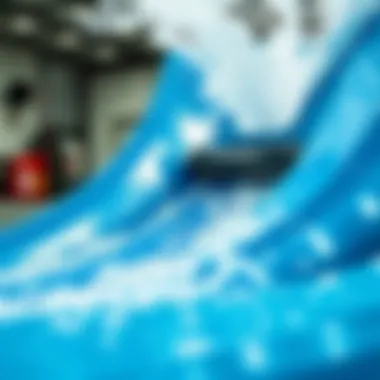

Technology and Features
Modern Flowrider machines are often equipped with advanced technology, such as customizable wave settings and integrated safety features. Investing in a model that boasts these technological enhancements can influence pricing significantly.
For instance, machines that allow for programmable wave shapes often attract more users, effectively justifying their often increased initial costs. However, advanced technology also beckons along with maintenance challenges; sophisticated systems might require specialized technicians for repairs, adding to ongoing expenses. Choosing a machine with the right balance of features and reliability is crucial, especially for businesses looking to provide an unparalleled surfing experience.
Brand and Manufacturer Considerations
Not all Flowrider brands are created equal, and this is a pivotal consideration that affects the price. Renowned brands in the water sports industry usually come with a reputation for quality and service, yet they do command a premium. Investing in a reputable manufacturer often assures better customer support and reliability, which might save costs in the long run related to repairs or eventual replacements.
Nevertheless, new brands can offer competitive pricing but may lack the same level of after-sales support or proven durability. Therefore, buyers should evaluate the brand history and customer reviews thoroughly to weigh the risks and benefits. This nuanced assessment is vital in understanding whether paying more upfront for a reputable brand might ultimately be a wiser investment.
Installation Costs and Considerations
When looking to add a Flowrider machine to your watersport facility, the installation costs and considerations ranks quite high on the importance scale. This segment details the foundational steps needed to properly position these machines—essentially acting as the backbone of your investment. Depending on how you slice it, installation can significantly affect your overall operating budget, creating a ripple effect on everything from ongoing maintenance expenses to future operational capabilities.
Site Preparation Requirements
Before diving into the logistics of installation, adequate site preparation cannot be overstated. The area where you place your Flowrider must be meticulously assessed and possibly modified to fit the machine's specifications. This involves several critical factors:
- Space: Ensure that there's ample room for the Flowrider, as well as any spectator areas. Typically, a Flowrider machine requires a footprint of at least several hundred square feet, so spatial planning is essential.
- Ground Stability: The ground must be competent enough to support the weight of the machine once it’s filled and operational. Soil testing may be necessary to avoid unpleasant surprises down the road.
- Drainage: Proper drainage systems are crucial. Water will be constantly circulating, and any pooling can lead to a slippery mess or even damage to both the machine and the surrounding area.
- Access to Utilities: Ensure that your site has access to the necessary utilities such as water and electricity. This will involve routing plumbing and electrical lines, which can incur additional costs.
Undertaking these preparatory steps is like laying the groundwork for a sturdy house—skip even one element, and the whole structure might face challenges in the future.
Labor Costs Associated with Installation
Now, onto the nitty-gritty regarding labor. The installation of a Flowrider machine isn't a job meant for the faint of heart or the inexperienced. At minimum, you'll require skilled laborers who possess specific knowledge and experience with similar installations. It's more than a simple assembly; here’s what you’ll typically incur in labor costs:
- Installation Team: Hiring professionals familiar with aquatic systems can cost between $50 to $100 per hour, depending on their expertise. You might need a crew of five to ten workers over a period spanning days to weeks.
- Specialized technicians: If your Flowrider has advanced technology integrations, expect to bring specialists on board to ensure everything is functioning seamlessly. Their fees might range higher due to their niche skills.
- Overtime Costs: It’s prudent to factor in possible overtime as installation can hit snags due to weather conditions or miscommunication, thereby extending the time frame.
Everything may add up quicker than you think, so it's advisable to create a budget tailored to accommodate labor fluctuations.
Permits and Legal Considerations
Don’t forget about red tape. The installation of a Flowrider machine often comes with a mountain of paperwork. Acquiring the necessary permits can be a monumental task that may vary significantly based on local laws or regulations. Here are some key elements:
- Building Permits: Most jurisdictions require a building permit to ensure that your installation adheres to safety and structural codes.
- Environmental Regulations: Depending on your location, you may need to comply with environmental regulations that affect water usage, chemical disposal, and energy consumption. Check local government guidelines to not run afoul of any laws.
- Liability Insurance: To protect yourself from potential lawsuits in case of accidents, you may have to procure additional liability insurance. This can be an ongoing expense that adds to your operating overheads.
All these legal necessities might feel tedious, but they are essential in legitimizing your operations and paving the way for a smooth installation process without future headaches.
"Planning for installation challenges not only saves money but can also make or break your operation in the long run."
Navigating the installation costs and considerations requires a meticulous approach, ensuring you cover all bases—from space preparation to labor and legalities. By doing so, you will lay a strong foundation for your Flowrider machine, allowing your investment to flourish effectively.
Ongoing Maintenance Expenses
When considering a Flowrider machine, ongoing maintenance expenses should not be treated lightly. Just like any other complex machinery, a Flowrider requires consistent upkeep to ensure optimal performance and safety. Moreover, the financial implications of maintenance can significantly influence the overall cost of ownership, making this a pivotal topic for both personal buyers and commercial operators.
Understanding Maintenance Costs
Ongoing maintenance typically encompasses routine tasks and potential repairs. Being proactive about these responsibilities can reduce the likelihood of extensive issues down the line, thus safeguarding your investment.
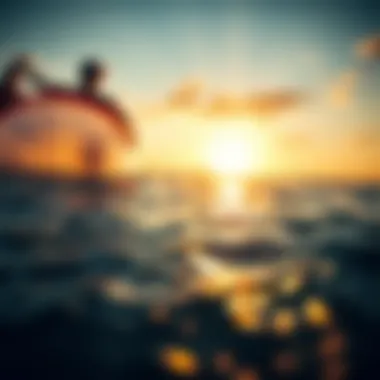
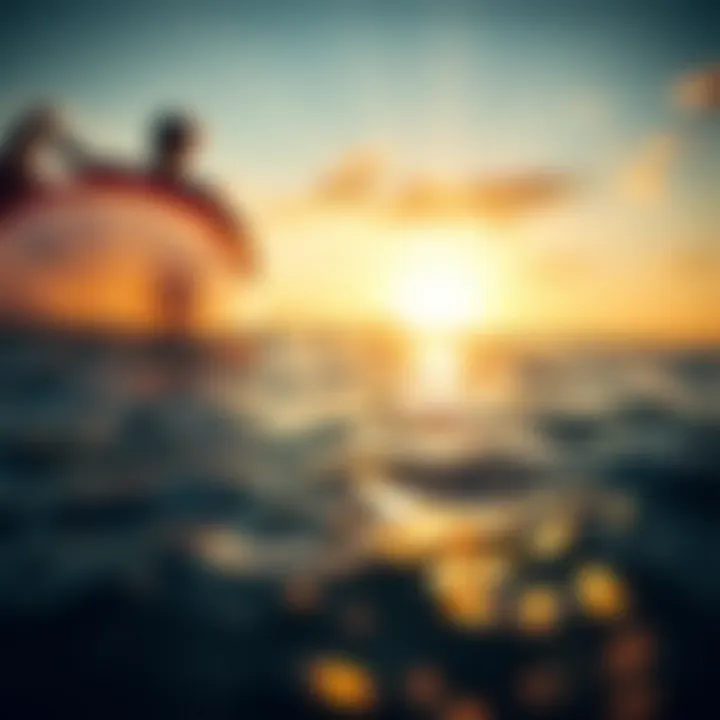
Routine Maintenance Needs
Routine maintenance needs for a Flowrider can vary, but they generally fall into a few key categories:
- Water Quality Management: Keeping the water clean is crucial. Regularly check and balance the chemical levels, filter effectiveness, and overall cleanliness. Healthy water not only improves user experience but also extends the life of the machine.
- Mechanical Inspections: Routine checks on the motor and pumps are essential. This means looking for any signs of wear or unusual sounds. By addressing small issues, like a loose fitting or a strange noise, you can avoid larger and costlier repair jobs in the future.
- Surface Maintenance: The surface of the Flowrider, where participants ride the waves, needs periodic assessment as well. Maintaining grip and condition can affect the performance and safety, so regular inspections should include checking for wear and tear.
From cleaner, to filters and parts, budgeting for these routine maintenance tasks ensures that the Flowrider runs efficiently, with minimal interruptions.
Repairs and Upgrades
Every machine can experience breakdowns or the need for upgrades, and Flowriders are no exception.
"An ounce of prevention is worth a pound of cure." - Benjamin Franklin
This old adage rings particularly true here. Investing time and money into repairs and upgrades can not only keep the machine functioning but can also enhance its performance.
Repairs
- Swift Repair Action: Whether it’s a failing water pump or an electrical issue, addressing problems swiftly minimizes downtime. Delaying repairs can often lead to cascading failures, making the costs skyrocket.
- Parts Replacement: It’s wise to keep track of the age and condition of components. Sometimes, minor parts need replacing long before the main machine wears out. Knowing when and what to replace can streamline repair processes.
Upgrades
- Technological Advancements: Stay abreast of new technologies that can enhance your Flowrider’s functionality. Upgrading an existing unit can be substantially more affordable than purchasing a brand new machine.
- Feature Enhancements: Think about features that could cater to your target audience's preferences. For instance, if your client base skews younger, certain fun features may fetch better engagement.
For more information on general maintenance and repairs, refer to resources like Wikipedia or Britannica.
By understanding and planning for these ongoing expenses, buyers can enjoy smoother operations and enhanced experiences for all water enthusiasts.
Comparative Market Analysis
When considering the addition of a Flowrider machine, understanding the competitive landscape is crucial. The Comparative Market Analysis allows buyers to see how different models stack up against each other in terms of features, pricing, and long-term viability. This analysis serves not only to illuminate individual choices but also to enable informed decision-making in an increasingly saturated market.
Comparing Different Brands of Flowrider Machines
Choosing the right brand of Flowrider machine can feel like navigating a maze, especially with so many options out there. Each brand brings its own unique flavor to the table. Whether it's the sleek design of the FlowRider® double or the advanced technology of Wave House, prospective buyers need to weigh their options carefully.
Some brands focus on affordability and ease of maintenance, making them great for smaller facilities. For instance, SCS Wave Pools offers models that might not carry the extra frills but get the job done without breaking the bank. Others, like WhiteWater West, are known for their cutting-edge technology and superior user experience, often found in premium resorts and entertainment parks.
It's important to consider the target demographic of your facility. Do you aim to attract families seeking fun, or serious surfers looking for a challenge? Each brand has different experiences to offer. Getting firsthand insights from users on platforms like Reddit or specialized forums can also guide your decision.
Cost vs. Features Analysis
Understanding not just the initial price tag but also the value of features can drastically affect the long-term enjoyment and profitability of a Flowrider machine. This segment dives deep into the trade-offs between cost and functionality.
- Basic vs. Advanced Features: A basic model might suffice for a recreational surf park, while an advanced model with features like adjustable wave height and enhanced safety measures might be more suitable for high-end resorts.
- Maintenance Costs: A feature-rich machine may demand higher upkeep but offer a superior experience that keeps customers coming back. On the flip side, simpler designs might require less frequent repairs and provide cost savings in the long run.
- Customer Experience: Features that enhance user experience—like better flow and easier entry—often translate to repeat business. As surfers and paddleboarders flock to a facility, the benefits of more advanced options can outweigh their costs over time.
"The right machine not only maximizes enjoyment but also lays the groundwork for a profitable venture."
To fully appreciate the implications of these decisions, it’s crucial to stay updated with the latest insights via resources like Wikipedia or specialized gear review sites. Understanding the nuances can make a world of difference when it comes to a successful installation and ongoing operation.
Return on Investment Considerations
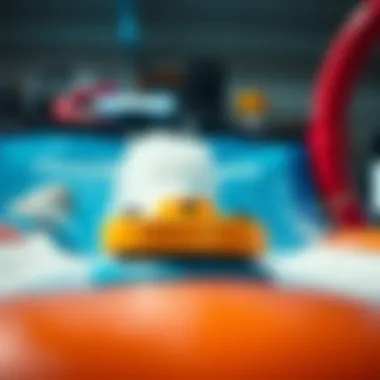
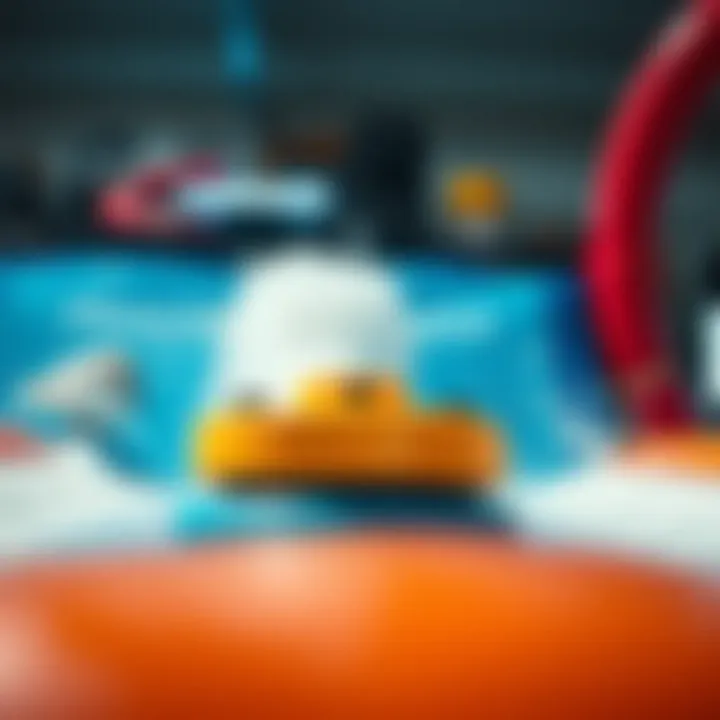
When contemplating the acquisition of a Flowrider machine, return on investment (ROI) emerges as a pivotal factor. This aspect is not merely a box to check; it embodies a comprehensive look into how effectively this investment can generate profitability over time. High costs associated with both purchasing and maintaining these machines make it vital for potential buyers to assess their value against potential earnings.
The ROI is influenced by multiple dimensions: the machine's location, user engagement levels, and operational strategies are critical. Setting up a Flowrider can equate to a financial gamble if not backed by a solid business model. However, with proper planning and execution, you can ride the wave of success where revenue gains can eventually outweigh the initial expenditures.
Evaluating Profit Potential
To understand profit potential, consider the flow of income derived from your Flowrider machine. Key elements influencing profitability include:
- Usage Volume: The more people engaged, the more income generated. If the ftent opens on weekends and holidays with high capacity, profits will swell.
- Pricing Strategy: Effective pricing can attract diverse clientele. Seasonal pricing could help capture demand spikes during warm weather.
- Add-ons and Package Deals: Offer lessons, merchandise, or day passes. Packages create incentive for customers to spend more.
A detailed demand forecast can help gauge how many riders are likely to show up over time, helping you calculate a more accurate ROI. This is essential, as empty waves don’t pay the bills.
Use in Commercial Settings vs. Personal Use
When deciding the environment for your Flowrider, a commercial setting promises broader profit opportunities compared to personal use.
In a commercial setting:
- Revenue Generation: Facilities benefit from large crowds, such as in water parks or resorts, leading to sustainable income flow.
- Marketing Advantages: Attracting visitors with a Flowrider can boost sales for additional services like food, beverages, and other attractions.
In contrast, in a personal setting, while enjoyment and personal fulfillment are key benefits, the financial return may not exist. It’s more about lifestyle enhancement for yourself and friends. In short, clearly define why you are investing.
Overall, understanding the financial ramifications of a Flowrider can be intricate but is undeniably crucial. It’s not just about making waves; it’s about making dollars, ensuring every turn of the tide brings in both fun and funds that can sustain your investment for years to come.
“Success is where preparation and opportunity meet.”
In this case, preparation refers to understanding all aspects of ROI that come with investing in a Flowrider machine, and ensuring the opportunity surfaces in the most profitable way.
The Future of Flowrider Technology
The world of watersports is evolving, and Flowrider machines are right at the forefront of this transformation. In an ever-growing market where thrilling experiences are key, understanding the future of Flowrider technology is essential for enthusiasts and business owners alike. The innovations on the horizon promise not only enhanced user experience but also a more sustainable approach to water-based fun. Knowing these future trends allows stakeholders to make informed decisions that align with their operational goals while keeping enjoyment at the forefront.
Advancements in Design and Functionality
The next wave of Flowrider technology is steeped in significant advancements designed to amplify performance and user engagement. Modern Flowrider machines are set to feature enhanced wave shapes and adjustable settings, providing customizable experiences tailored to varying skill levels. These developments mean that whether you’re a novice rider or a seasoned pro, there's a flow tailored just for you.
- Smart Technology Integration: Innovations like smart sensors to adjust water flow and incline automatically are on the rise. This leads to a better, safer riding experience that reacts in real-time to user performance.
- User-Friendly Controls: Touchscreen interfaces are becoming commonplace, making it easier to set up sessions. Riders will soon have the ability to create personal profiles that track their skills and performance metrics.
- Space-Saving Designs: Future models may focus on compact construction to fit into tighter spaces. This opens up possibilities for urban installations where space is often a precious commodity.
These advancements not only enhance functionality but also drive user engagement, making the Flowrider an irresistible addition to any watersport facility.
Environmental Considerations and Sustainability
As technology races forward, it’s crucial to examine the environmental impact of these innovations. The future of Flowriders lies in a dual focus on providing exhilarating experiences while being conscientious of nature. Manufacturers are realizing the importance of sustainable practices, ensuring that entertainment does not come at the expense of our planet.
- Water Conservation: Upcoming designs are likely to incorporate systems that recycle water, significantly reducing the amount needed per session. This is a game-changer for facilities trying to manage utility costs and environmental footprints.
- Eco-Friendly Materials: The shift toward using biodegradable and recyclable materials in the construction of Flowriders is gaining momentum. This not only lessens the ecological impact but also appeals to eco-conscious consumers.
- Energy Efficiency: Integration of solar panels and energy-efficient pumps adds another layer of sustainability. This means that Flowriders could possibly operate on renewable energy, making the whole experience greener.
“The transformation of Flowrider into a more sustainable machine not only benefits the environment but also enhances its appeal among the next generation of environmentally-conscious sports enthusiasts.”
To summarize, the future of Flowrider technology is not only promising in terms of user experience but also holds the potential to redefine the watersport landscape with smarter, greener solutions. This movement towards combining fun with sustainability will perhaps become a benchmark in how recreational facilities operate in the years to come.
Finale
As we wrap up this comprehensive look into the various costs and considerations associated with investing in a Flowrider machine, it's crucial to emphasize the significance of making an informed decision. This article has illuminated several key elements: initial purchase costs, installation challenges, and continuous maintenance responsibilities. Each factor plays a vital role in steering potential buyers—whether they are in the commercial sector or part of a more personal venture—towards an investment that aligns with their needs and expectations.
Final Thoughts on the Investment in a Flowrider Machine
Opting for a Flowrider might be likened to riding a wave of opportunity. The investment is not just about the initial financial outlay but includes long-term thinking. Consider the following dimensions:
- Cost vs. Experience: Many purchasers find the experience a Flowrider machine provides can justifying its costs. It allows users to enjoy a simulated surfing experience, making it an exciting addition to any recreational facility.
- Target Market Assessment: Understand who will benefit from the machine. Surfers, paddleboarders, and instructors alike may consider this a playground for honing skills or just having fun. Tuning into their needs can refine the focus of any marketing effort.
- Location Matters: The venue where the Flowrider machine will reside can shape its success. Proximity to water sports hubs or tourist hotspots can enhance its marketability.
- Technological Considerations: Innovations in Flowrider technology are ongoing. Investing in a new machine with cutting-edge features could yield a better return as it is likely to attract more users.



